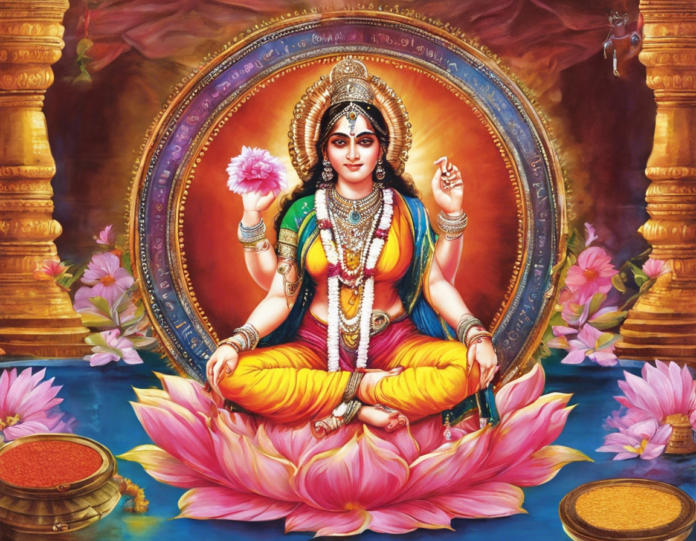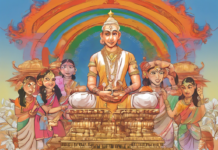Vat Savitri Vrat, also known as Vat Purnima, is a significant Hindu festival observed by married women in various parts of India. This day is dedicated to Lord Satyanarayan and Goddess Savitri. Married women fast and pray for the well-being and long life of their husbands. The festival is celebrated on the full moon day in the month of Jyeshtha according to the Hindu calendar, which usually falls in May or June according to the Gregorian calendar.
Origins of Vat Savitri Vrat:
The festival has its roots in an ancient mythological story known as the Vat Savitri Vrat Katha. The story revolves around the devotion and dedication of Savitri towards her husband, Satyavan. According to the legend, Savitri’s husband, Satyavan, was destined to die within a year of their marriage. However, Savitri’s unwavering devotion and adherence to truth compelled Lord Yama, the god of death, to grant her three boons. Through her wisdom and wit, Savitri saved her husband’s life, thereby reinstating the belief that a woman’s prayers and dedication can change the course of destiny.
Significance of Vat Savitri Vrat:
The Vat Savitri Vrat holds immense significance in Hindu culture and tradition. It symbolizes the power of love, devotion, and the strength of a woman’s commitment towards her husband. By observing this fast, married women seek blessings for the longevity and well-being of their spouses. The festival also highlights the importance of marital harmony, understanding, and companionship in a relationship.
Rituals and Observance:
The Vat Savitri Vrat is observed with great fervor and devotion by married women. The day begins with women waking up early, taking a ritualistic bath, and dressing in traditional attire. They visit a sacred fig tree (Vat Vriksha) and tie colorful threads around its trunk while offering prayers for the prosperity and longevity of their husbands. Women observe a day-long fast, abstaining from food and water until they perform the evening rituals.
Key Rituals of Vat Savitri Vrat:
1. Worship of the Banyan Tree: Women offer prayers to the sacred fig tree, also known as the banyan tree, as it symbolizes longevity and immortality.
2. Tying the Sacred Thread: Women tie a sacred thread around the tree while reciting prayers and mantras for the well-being of their husbands.
3. Fasting: Married women observe a strict fast without consuming food or water until the completion of the Vrat Katha in the evening.
4. Listening to the Vrat Katha: In the evening, women gather to listen to the Vat Savitri Vrat Katha, narrating the story of Savitri and Satyavan’s devotion and love.
5. Offering Prayers: Women conclude the day by offering prayers and seeking blessings for their husbands’ longevity and prosperity.
The Symbolism of Vat Savitri Vrat:
The Vat Savitri Vrat is not just a religious observance but a reminder of the values of love, commitment, and sacrifice in a marital relationship. It symbolizes the strength and determination of a woman in upholding her marital duties and responsibilities. The festival emphasizes the ideals of selflessness, devotion, and the power of prayers in Hindu culture.
FAQs (Frequently Asked Questions) about Vat Savitri Vrat:
1. What is the significance of tying a thread around the banyan tree during Vat Savitri Vrat?
– Tying a thread around the banyan tree symbolizes the eternal bond between husband and wife. It is believed to bring longevity and prosperity to the husband.
2. Can unmarried women observe Vat Savitri Vrat?
– Vat Savitri Vrat is traditionally observed by married women. Unmarried women may also observe it with the hope of finding a devoted and loving partner.
3. Is fasting mandatory during Vat Savitri Vrat?
– Yes, married women observe a fast on Vat Savitri Vrat as a symbol of dedication and sacrifice for their husbands’ well-being.
4. How does the Vat Savitri Vrat Katha inspire devotees?
– The Vat Savitri Vrat Katha narrates the story of Savitri’s unwavering devotion and commitment to her husband, inspiring devotees to value love, sacrifice, and marital harmony.
5. Can women break their fast before listening to the Vrat Katha?
– It is customary for women to only break their fast after listening to the Vrat Katha in the evening as part of the Vat Savitri Vrat rituals.
In conclusion, the Vat Savitri Vrat festival is not only a religious observance but a celebration of love, dedication, and the eternal bond between husband and wife. The Vrat Katha of Savitri and Satyavan serves as a timeless reminder of the power of love and devotion in overcoming challenges and altering fate. By observing this auspicious day, married women seek blessings for their husbands’ well-being and longevity, embodying the essence of a harmonious and fulfilling marital relationship.









